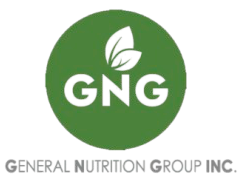Hyperactivity, commonly associated with children, also affects adults and can significantly disrupt daily life and productivity. Understanding the underlying chemistry of hyperactivity is key to managing its symptoms effectively. Several nutritional imbalances are often linked to hyperactivity, and identifying these patterns can provide valuable insights into its root causes. Hair analysis, a non-invasive diagnostic tool, is particularly useful for pinpointing these imbalances, offering a personalized approach to guiding nutritional corrections and improving overall well-being.
The Role of Calcium and Magnesium in Hyperactivity
Calcium and magnesium play crucial roles in calming and relaxing the central nervous system, making them integral to understanding hyperactivity. In many individuals with hyperactivity, hair analysis often reveals calcium and magnesium levels that are outside the normal range. These deviations can occur in both fast and slow oxidizers, but the underlying mechanisms differ.
In fast oxidizers, low calcium and magnesium levels are common, directly contributing to hyperactivity symptoms. However, hyperactivity is increasingly observed in slow oxidizers, who often have elevated calcium and magnesium levels. This elevation indicates a state of bio unavailability, where the minerals are not retained in an ionized, usable form in the blood but instead precipitate in the tissues. This condition, similar to calcium deposits in hard water areas, renders the minerals ineffective despite their apparent abundance in tissues.
While earlier approaches avoided supplementing calcium and magnesium for slow oxidizers, more recent findings show that providing bioavailable forms of these minerals can be highly beneficial. Supplementation helps address the symptoms of hyperactivity without worsening tissue imbalances. The key lies in tailoring the dosage to the individual, as greater deviations in calcium and magnesium levels—whether above or below normal—often require higher doses of supplementation for optimal results. Properly balancing these critical minerals can significantly alleviate hyperactivity symptoms and restore equilibrium to the nervous system.
Zinc and Copper: Balancing Key Minerals for Hyperactivity
Imbalances in zinc and copper levels are another common factor contributing to hyperactivity. Typically, low zinc and/or elevated copper levels are observed, though the patterns differ between fast and slow oxidizers. Fast oxidizers often exhibit low levels of both zinc and copper, while slow oxidizers frequently have elevated copper, which may sometimes be hidden. Indicators of hidden copper toxicity include a low sodium-to-potassium ratio, low potassium levels, elevated calcium, mercury toxicity, or even a deceptively low copper level in hair analysis.
Zinc plays a calming role in the nervous system, with some considering it akin to a calming neurotransmitter. It stimulates the cortex or “new brain,” helping to modulate and reduce emotional responses. Conversely, copper stimulates the emotional brain or diencephalon, leading to heightened emotional reactions. Elevated copper also promotes the production of biogenic amines, compounds that excite the nervous system, and affects thyroid and adrenal activity, further exacerbating hyperactivity symptoms.
The Role of Other Minerals in Hyperactivity
In addition to calcium, magnesium, zinc, and copper, other minerals play critical roles in managing hyperactivity. Chromium and manganese are particularly beneficial for addressing low blood sugar tendencies, a common factor that can exacerbate hyperactivity symptoms. By stabilizing blood sugar levels, these minerals help reduce erratic energy spikes and improve focus and emotional regulation.
Toxic metals also significantly impact the nervous system, either by directly interacting with brain structures or by disrupting the metabolism of essential minerals. For instance, lead interferes with calcium metabolism, impairing its calming effects on the nervous system. Similarly, cadmium disrupts zinc metabolism, which is vital for emotional stability and cognitive function. Mercury toxicity, often linked to elevated copper levels, creates further imbalances that can intensify hyperactivity symptoms. Addressing these toxic metal burdens alongside supporting vital minerals is crucial for achieving long-term relief from hyperactivity.
Diet and Hyperactivity: The Importance of Balanced Nutrition
Dietary modifications can significantly improve hyperactivity symptoms, especially when tailored to an individual’s metabolic needs. Avoiding stimulants such as caffeine, chocolate, and high-sugar foods is essential, as these substances can exacerbate hyperactivity. For individuals with hypoglycemic tendencies, eliminating simple carbohydrates, including fruit and fruit juice, may help stabilize blood sugar levels, reducing mood swings and anxiety.
Protein plays a key role in managing hyperactivity, particularly for slow oxidizers who often benefit from its stimulating effect on thyroid and adrenal gland activity. Incorporating protein-rich foods like turkey and milk products, which contain L-tryptophan, can have a calming effect for some. However, those sensitive to dairy should avoid these foods to prevent adverse reactions. Including some protein with each meal helps slow oxidizers stabilize their blood sugar and improve their oxidation rates.
Carbohydrates, while sometimes sedative, must be consumed carefully. Grains and other phytate-rich foods can bind calcium, magnesium, and zinc, potentially causing deficiencies that worsen hyperactivity. Excess carbohydrates, particularly in fast oxidizers, can further accelerate metabolism and intensify symptoms. Additionally, diets high in sugars and carbohydrates may promote candida overgrowth, a condition linked to hyperactivity.
Healthy fats and oils are an important part of the diet, as they slow metabolism and help level blood sugar. A balanced approach to macronutrient intake—combining proteins, fats, and moderate carbohydrates—can provide a stable foundation for managing hyperactivity effectively.
The Role of Vitamins and Amino Acids in Managing Hyperactivity
Vitamins and amino acids are essential for addressing hyperactivity symptoms and supporting overall health. B-complex vitamins, for example, can enhance the oxidation rate, which is particularly beneficial for slow oxidizers with sluggish metabolic activity. However, caution is necessary for fast oxidizers, as excessive B-complex intake may exacerbate hyperactivity symptoms by further accelerating metabolism.
Amino acids, including glutamine, play a crucial role in stabilizing blood sugar levels, which can help reduce mood swings and anxiety often associated with hyperactivity. By incorporating the appropriate balance of vitamins and amino acids into a nutritional plan tailored to individual needs, both slow and fast oxidizers can achieve better metabolic balance, reduced symptoms, and improved overall well-being.
